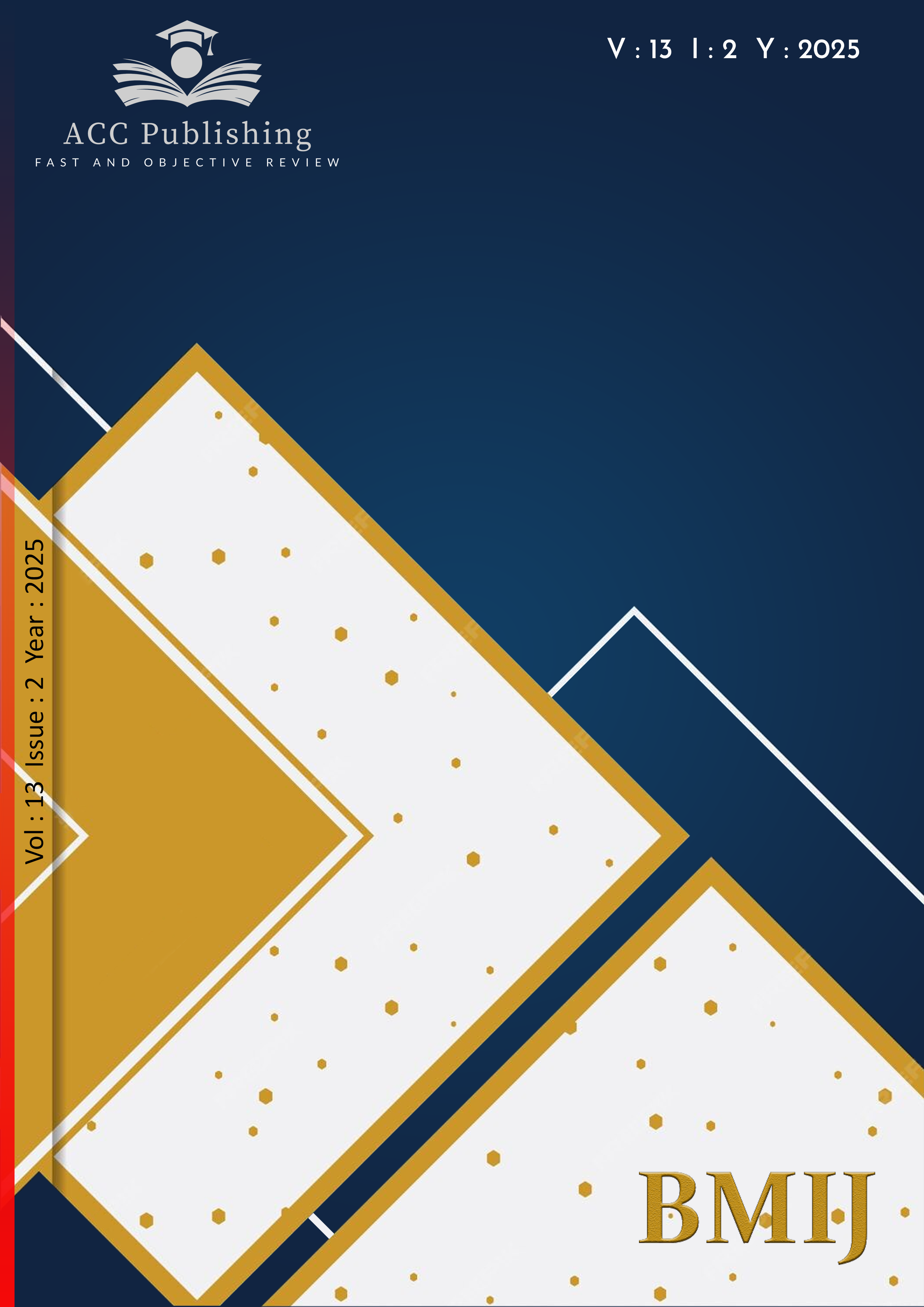Measuring motives for YouTube video consumption: An updated uses and gratifications scale and the impact of past view counts on users' viewing decisions

Published 2025-06-25
Keywords
- Digital Media Consumption, Uses and Gratifications Theory, Social Interaction and Media
- Dijital Medya Tüketimi, Kullanımlar ve Doyumlar Teorisi, Sosyal Etkileşim ve Medya
How to Cite
Copyright (c) 2025 Emine Çiğdem Canatan- Ayşegül Toker - Ali Çoşkun

This work is licensed under a Creative Commons Attribution-NonCommercial-NoDerivatives 4.0 International License.
How to Cite
Abstract
This study investigates the motivations behind YouTube usage among Turkish-speaking users. Based on the Uses and Gratifications Theory, a scale was developed from focus group findings and an extensive literature review. The survey, conducted with 105 participants, identified four primary motivations: (1) Convenient Entertainment, (2) Convenient Information Seeking, (3) Content Control and Social Interaction, and (4) Escapism, Loneliness, and Telepresence. Entertainment emerged as the most potent motivator, while the influence of social and emotional factors was found to be lower, and video view counts had a limited impact on viewing preferences. This study confirms that established motivations broadly apply to Turkish-speaking users and identifies Content Control and Social Interaction as a dimension, highlighting the significance of users' agency in content selection within this demographic. Additionally, it reveals telepresence as a unique sub-dimension within the Realm of Escapism. The findings emphasise that content control and immersive experiences play a key role in this demographic. By uncovering these dynamics, the study provides a more refined and comprehensive understanding of the factors influencing YouTube viewing behaviour overall.
References
- Acikgoz, F., & Burnaz, S. (2021). The influence of influencer marketing on YouTube influencers. International Journal of Internet Marketing and Advertising, 15(2), 201-219.
- Ault, S. (2014, August 5). Variety. Variety. Retrieved from https://variety.com
- Ball-Rokeach, S. J., & Reardon, K. (1988). Monologue, dialogue, and telelog: Comparing an emergent form of communication with traditional forms. Advancing communication science: Merging mass and interpersonal processes, 135-161.
- Bantz, C. R. (1982). Exploring uses and gratifications: A comparison of reported uses of television and reported uses of favorite program type. Communication research, 9(3), 352-379.
- Berelson, B. (1949). What 'missing the newspaper' means. Communications Research 1948-1949, 111-129.
- Biçer, S., & Şener, Y. (2020). Kullanımlar ve doyumlar yaklaşımı bağlamında üniversite öğrencilerinin YouTube kullanım alışkanlıkları. Selçuk İletişim, 13(2), 589-627.
- Bondad-Brown, B. A., Rice, R. E., & Pearce, K. E. (2012). Influences on TV Viewing and Online User-shared Video Use: Demographics, Generations, Contextual Age, Media Use, Motivations, and Audience Activity. Journal of Broadcasting & Electronic Media, 56(4), 471–493. https://doi.org/10.1080/08838151.2012.732139
- Burgess, J., & Green, J. (2018). YouTube: Online video and participatory culture. John Wiley & Sons.
- Churchill, G. A. (1979b). A paradigm for developing better measures of marketing constructs. Journal of Marketing Research, 16(1), 64. https://doi.org/10.2307/3150876
- Covington P, Adams J, Sargin E (2016) Deep neural networks for YouTube recommendations. In: proceedings of the 10th ACM conference on recommender systems pp 191–198
- de Oliveira, R., Pentoney, C., & Pritchard-Berman, M. (2018, September). YouTube needs: understanding user's motivations to watch videos on mobile devices. In Proceedings of the 20th International Conference on Human-Computer Interaction with Mobile Devices and Services (pp. 1-11).
- Ebersole, S. (2000). Uses and gratifications of the web among students. Journal of Computer-Mediated Communication, 6(1), JCMC614.
- Fiske, J. (2010). Introduction to communication studies. Routledge.
- Flanagin, A. J., & Metzger, M. J. (2001). Internet use in the contemporary media environment. Human communication research, 27(1), 153-181.
- Gummesson, E. (2001). Are current research approaches inmarketing leading us astray?. Marketing theory, 1(1), 27-48.
- Ha, L. (2018). YouTube as a global online video portal and an alternative to TV. The audience and business of YouTube and online videos, 1-16.
- Halim, E., Anindya, R., & Hebrard, M. (2020, August). The impact of motivation to watch youtube, subjective norms, behaviour control, information success model to watching youtube engagement. In 2020 International Conference on Information Management and Technology (ICIMTech) (pp. 800-805). IEEE.
- Hanson, G., & Haridakis, P. (2008). YouTube users watching and sharing the news: A uses and gratifications approach. Journal of Electronic Publishing, 11(3).
- Haridakis, P., & Hanson, G. (2009). Social interaction and co-viewing with YouTube: Blending mass communication reception and social connection. Journal of broadcasting & electronic media, 53(2), 317-335.
- Herzog, H. (1942). Motivations and gratifications of daily serial listeners. Radio research, 1943, 2-23.
- Holmbom, M. (2015). The YouTuber: A qualitative study of popular content creators.
- İlhan, E., & Aydoğdu, A. G. (2019). Youtube kullanicilarinin kullanim motivasyonlarinin incelenmesi. Gümüşhane Üniversitesi İletişim Fakültesi Elektronik Dergisi, 7(2), 1130-1153.
- James, M. L., Wotring, C. E., & Forrest, E. J. (1995). An exploratory study of the perceived benefits of electronic bulletin board use and their impact on other communication activities. Journal of Broadcasting & Electronic Media, 39(1), 30-50.
- Jones, J. M. (2010). The me in media: A functionalist approach to examining motives to produce within the public space of YouTube. University of Minnesota.
- Katz, E., & Foulkes, D. (1962). On the use of the mass media as "escape": Clarification of a concept. Public opinion quarterly, 26(3), 377-388.
- Katz, E., Blumler, J. G., & Gurevitch, M. (1973). Uses and gratifications research. The public opinion quarterly, 37(4), 509-523.
- Kaye, B. K., & Johnson, T. J. (2002). Online and in the know: Uses and gratifications of the web for political information. Journal of broadcasting & electronic media, 46(1), 54-71.
- Key YouTube Subscriber Statistics: $30 Billion Earned, 2B Users. (2024, July 23). Retrieved from https://worldmetrics.org/youtube-subscriber-statistics/
- Khalifa, H., Samir, R., & Ebrahim, M. (2021). Uses and gratifications of YouTube platform among young children in Bahrain. International Journal of Media and Mass Communication (IJMMC), 3(2), 183-203.
- Khan, M. L. (2017). Social media engagement: What motivates user participation and consumption on YouTube?. Computers in human behaviour, 66, 236-247.
- Kim, J. Y. (2023). Do User Reveal the Needs That Motivate Them to Watch Gaming Videos?: A Computational Analysis of Gaming Video User Comments on YouTube (Master's thesis, The University of North Carolina at Chapel Hill).
- Kitzinger, J. (1995). Qualitative research: introducing focus groups. Bmj, 311(7000), 299-302.
- Klapper, J. T. (1963). Mass communication research: An old road resurveyed. Public Opinion Quarterly, 27(4), 515-527.
- Klobas, J. E., McGill, T. J., Moghavvemi, S., & Paramanathan, T. (2018). Compulsive YouTube usage: A comparison of use motivation and personality effects. Computers in human behaviour, 87, 129-139.
- Köktener, A. (2020). Z Kuşağı YouTube Kullanım Motivasyonları. Celal Bayar University Journal of Social Sciences/Celal Bayar Üniversitesi Sosyal Bilimler Dergisi, 18(4).
- Ray, K. (2019). Uses and Gratifications of Watching YouTube Beauty Vlogs (Master's thesis, Rochester Institute of Technology).
- Lasswell, H. D. (1960). The structure and function of communication in society. The communication of ideas, 37(1), 136-139.
- Lin, C. A. (1996). Standpoint: Looking back: The contribution of Blumler and Katz's uses of mass communication to communication research.
- McLeod, J., Ward, S., & Tancill, K. (1965). Alienation and uses of the mass media. Public Opinion Quarterly, 29(4), 583-594.
- Merdin, E. (2010). Bir dürtüsel satın alma yatkınlığı ölçeği geliştirme denemesi. In Proceedings of 15th National Marketing Congress (pp. 245-251).
- Morgan, D. L., & Scannell, A. (1998). Planning Focus Group as qualitative research.
- Most Visited Websites in the World, Updated September 2024. (2024, October 13). Retrieved from https://www.semrush.com/website/top/
- Myrick, J. G. (2015). Emotion regulation, procrastination, and watching cat videos online: Who watches Internet cats, why, and to what effect?. Computers in human behaviour, 52, 168-176.
- Papacharissi, Z., & Rubin, A. M. (2000). Predictors of Internet use. Journal of broadcasting & electronic media, 44(2), 175-196.
- Perreault Jr, W. D., & Leigh, L. E. (1989). Reliability of nominal data based on qualitative judgments. Journal of marketing research, 26(2), 135-148.
- Perse, E. M., & Rubin, A. M. (1990). Chronic loneliness and television use.
- Petrova, E., Gross, N., & Insights, G. (2017). reasons people watch gaming content on YouTube. Think with Google.
- Pirouz, D. M., Johnson, A. R., Thomson, M., & Pirouz, R. (2015). Creating online videos that engage viewers. MIT Sloan management review, 56(4), 83.
- Rosengren, K. E. (1974). Uses and gratifications: A paradigm outlined. The uses of mass communications: Current perspectives on gratifications research, 3, 269-286.
- Rosenthal, S. (2018). Motivations to seek science videos on YouTube: Free-choice learning in a connected society. International Journal of Science Education, Part B, 8(1), 22-39.
- Rubin, A. M. (1986). Uses, gratifications, and media effects research. Perspectives on media effects/Erlbaum.
- Rubin, A. M. (2009). Uses and gratifications. The SAGE handbook of media processes and effects, 147-159.
- Rubin, A. M., & Rubin, R. B. (2001). Interface of personal and mediated communication: Fifteen years later. The Electronic Journal of Communication, 11(1), 7-23.
- Ruggiero, T. E. (2000). Uses and gratifications theory in the 21st century. Mass communication & society, 3(1), 3-37.
- Saputra, Y., & Fatimah, A. S. (2018). The use of TED and YOUTUBE in Extensive Listening Course: Exploring possibilities of autonomy learning. Indonesian JELT: Indonesian Journal of English Language Teaching, 13(1), 73-84.
- Schramm, W., Riesman, D., & Bauer, R. A. (1959). The state of communication research: Comment. The Public Opinion Quarterly, 23(1), 6-17.
- Setiawan, H., & Purwasito, A. (2020, December). Youtube Social Media Trends Reduce Television Watching Interest. In 6th International Conference on Social and Political Sciences (ICOSAPS 2020) (pp. 125-132). Atlantis Press.
- Silaban, P. H., Chen, W. K., Nababan, T. S., Eunike, I. J., & Silalahi, A. D. K. (2022). How travel vlogs on YouTube influence consumer behaviour: A use and gratification perspective and customer engagement. Human Behaviour and Emerging Technologies, 2022(1), 4432977.
- Sjöberg, U. (1999). The rise of the electronic individual: A study of how young Swedish teenagers use and perceive Internet. Telematics and Informatics, 16(3), 113-133.
- Statista. (2024, April). Most popular social networks worldwide as of April 2024, by number of monthly active users. Retrieved from https://www.statista.com/statistics/272014/global-social-networks-ranked-by-number-of-users/
- Sui, W., Sui, A., & Rhodes, R. E. (2022). What to watch: Practical considerations and strategies for using YouTube for research. Digital Health, 8, 20552076221123707.
- Sundar, S. S., & Limperos, A. M. (2013). Uses and grats 2.0: New gratifications for new media. Journal of broadcasting & electronic media, 57(4), 504-525.
- Sweeney, J. C., & Soutar, G. N. (2001). Consumer perceived value: The development of a multiple item scale. Journal of retailing, 7
- Sykes, W. (1990). Validity and reliability in qualitative market research: A review of the literature. Journal of the Market Research Society.
- Tabakhnick, B. G., & Fidell, L. S. (2007). Using multivariate statistics.
- Weinberger, D. (2007). Everything is miscellaneous: The power of the new digital disorder. Macmillan.
- We Are Social & Meltwater. (2023). Digital 2023: Global overview report. DataReportal. https://datareportal.com/reports/digital-2023-global-overview-report
- Wolfradt, U., & Doll, J. (2001). Motives of adolescents to use the Internet as a function of personality traits, personal and social factors. Journal of Educational Computing Research, 24(1), 13-27.
- Wright, C. R. (1960). Functional analysis and mass communication. Public opinion quarterly, 24(4), 605-620.
- YouTube has 1.5 billion logged-in monthly users watching a ton of mobile video. TechCrunch. (2017, June 22). Retrieved from https://techcrunch.com/2017/06/22/youtube-has-1-5-billion-logged-in-monthly-users-watching-a-ton-of-mobile-video/
- Zappavigna, M. (2023). Digital intimacy and ambient embodied copresence in YouTube videos: construing visual and aural perspective in ASMR role play videos. Visual Communication, 22(2), 297-321.



